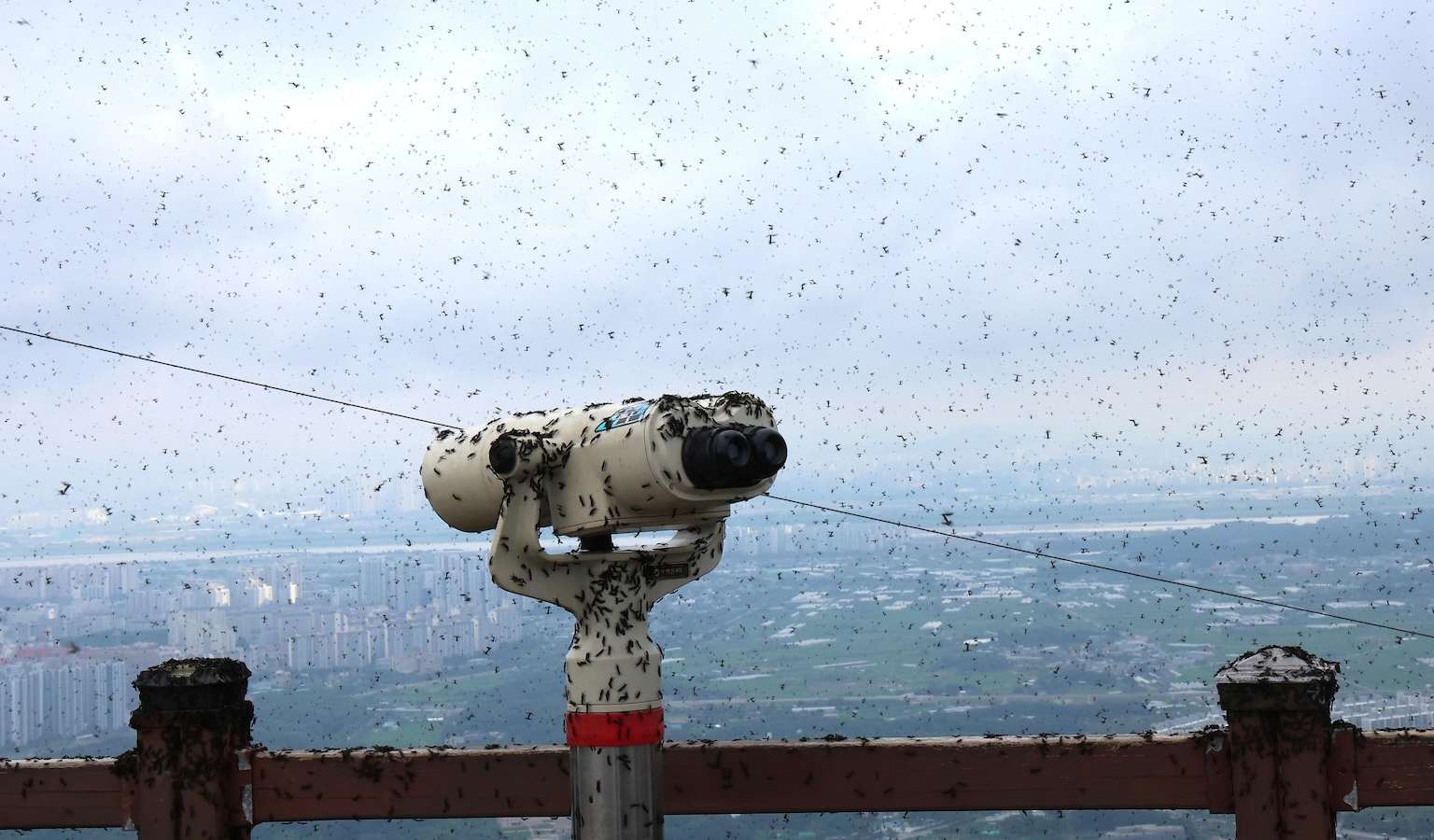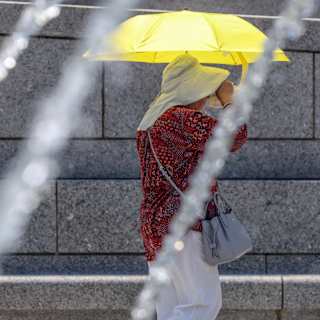- Complaints Double Amid Climate Concerns
- Eco-Friendly Response Despite Public Frustration
Swarms of lovebugs have descended upon Gyeyang Mountain near Seoul, creating dense clouds of insects that forced workers to shovel dead bugs from observation decks as viral videos captured hikers struggling through the overwhelming invasion.
The 395-meter peak in Incheon, just west of South Korea's capital, experienced what local officials described as a sharp surge in lovebug populations over the weekend, far exceeding levels seen in previous years. The insects, scientifically known as Plecia nearctica, fly in mating pairs and have blanketed wooden staircases and rest areas along mountain trails.

Seoul Metropolitan Government recorded 9,296 complaints about lovebugs in 2024, more than doubling from 4,418 the previous year1. The insects, which neither bite nor transmit disease, have spread throughout Seoul and surrounding Gyeonggi Province since first appearing in parts of the capital in 20222.
"Compared with the past two years, the number of lovebugs sharply surged last weekend at the mountain," Gyeyang district official Wang Hyeon-jeong said Tuesday2. Authorities remain uncertain about the cause of this year's population explosion, though the Environment Ministry noted that the mountain's hot, humid conditions create ideal breeding environments2.
Climate change appears central to the insects' proliferation. Experts link rising temperatures to the lovebug expansion, noting they likely arrived from China and now thrive in South Korea's warming climate3. The insects emerged earlier this year, with first sightings on June 2 compared to June 15 in 20244.
Despite mounting public frustration, South Korean officials classify lovebugs as beneficial insects that pollinate flowers and convert plant materials into organic components1. This designation has led authorities to avoid chemical pesticides, instead relying on sticky traps and water spraying1.
The approach reflects broader environmental policies prioritizing ecological balance over immediate pest control. "Spraying pesticides can also kill natural predators of lovebugs, such as mantises and spiders," said Lee Dong-kyu, a professor of environmental health at Kosin University2.
However, experts note that natural predators offer little help. Birds and frogs avoid eating adult lovebugs because the insects are "too acidic," leaving biological control nearly impossible3.
The lovebug season typically lasts until mid-July, when adult populations crash due to their brief lifecycle - males live three to four days while females survive up to a week2. The Environment Ministry plans to assess this year's outbreak severity after the insects disappear1.
One frustrated Seoul resident captured the public mood: "If this isn't a pest, what is?"2





